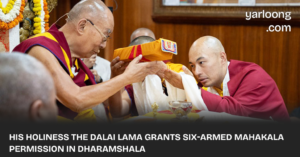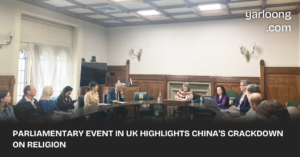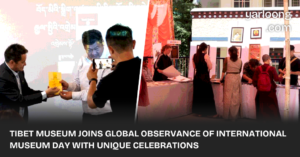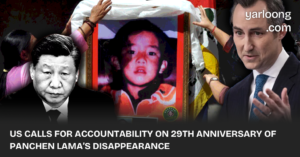Controversial Figure Highlights the Tension Between Politics and Religion in Tibet

LHASA – At a recent event dominated by the red flags of the Chinese Communist Party (CCP) and the imposing image of President Xi Jinping, a figure stood out, causing both intrigue and concern – the so-called “false Panchen Lama,” Gyaincain Norbu.
According to an article from Bitter Winter, a publication that frequently examines religious freedom issues, Gyaincain Norbu is the Beijing-backed replacement for the genuine 11th Panchen Lama, Gedhun Choekyi Nyima. The latter was abducted by the CCP in 1995, shortly after being identified by the Dalai Lama. Since his mysterious disappearance, the whereabouts of Gedhun Choekyi Nyima, once the world’s youngest prisoner of conscience, remain undisclosed.
ALSO READ: EU Expresses Grave Concern Over Tibet’s Human Rights Situation at UN Human Rights Council 54th Session
In the world of Tibetanhina Buddhism’s Gelug tradition, the Panchen Lama holds a significant status, surpassed only by the Dalai Lama. The CCP‘s installment of Gyaincain Norbu in this sacred position has been seen by many as a blatant attempt to control and manipulate Tibetan religious beliefs and practices.
Now holding high-ranking positions within CCP-influenced organizations, the “false Panchen Lama” is frequently paraded as a symbol of religious freedom under the Party’s regime. This portrayal, as highlighted by Bitter Winter, often involves international appearances where he disparages the Dalai Lama, asserting that Tibetan Buddhists are thriving under Chinese rule.
However, it appears Gyaincain Norbu faces considerable skepticism at home. His recent tour in Tibet, as reported by the China Buddhist Association, was designed to “promote Tibetan Buddhism to adapt to socialist society and the new era of socialism with Chinese characteristics.” Furthermore, he emphasized the significance of recognizing “Comrade Xi Jinping as the core of the Party’s Central Committee” and adopting the “Xi Jinping Thought on Socialism with Chinese Characteristics for the New Era.”
ALSO READ: China Under Scrutiny: Women and Children’s Rights in the Limelight at UNHRC
Such overt political messages, coming from a supposed religious leader, do little to endear him to a population well aware of the genuine Panchen Lama’s fate. This recent push to incorporate political ideologies into religious teachings marks an alarming development for many Tibetans.
Religious leaders, scholars, and international observers should be vigilant and discerning, especially when encountering the narratives spun around figures like the “false Panchen Lama.” As Bitter Winter keenly observes, it is crucial to differentiate genuine religious leaders from those serving a political agenda.






